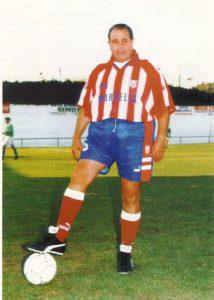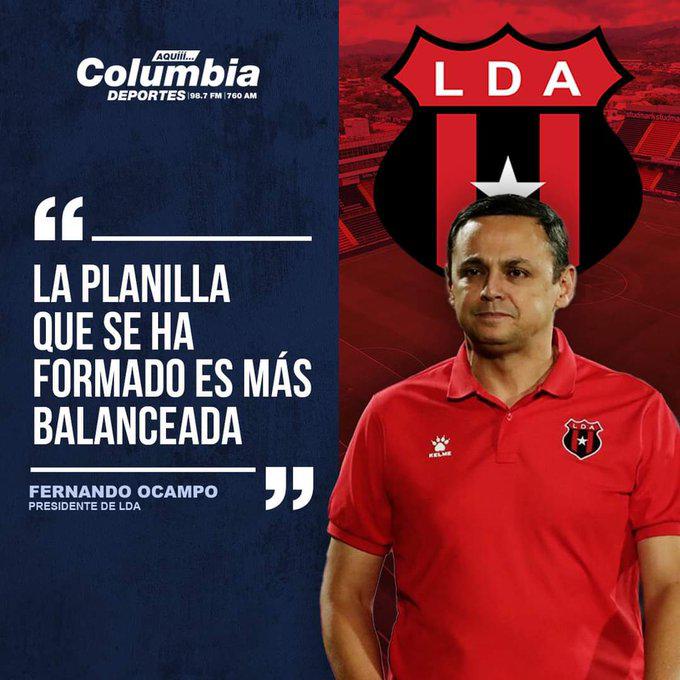Football From Jesús Gil to the sheikhs, chronology of modern football
In recent months we have seen Europe's most powerful clubs throw a smack at UEFA, only to back down and leave the situation in a kind of prelude to the final battle. We have seen the Qatari club snatch Leo Messi from Barcelona and reject exorbitant offers from Florentino Pérez, Depor face Celta's subsidiary, Falcao sign for Rayo Vallecano and Borja Valero for a so-called popular football club.
It might seem that this is a before and after in this sport, but if we look back and review what has happened in recent decades, we will see that it is just one more step in a continuous process of commodification of football.
At what moment had Peru been screwed up? Vargas Llosa wondered in his novel Conversation in the Cathedral and, in the case of soccer, it is not easy to establish the moment of original sin. To start this story at a specific point, we could say that, in Spain, the beginning of modern football is in 1990, the year in which the Sports Law was approved, which forced professional clubs to become sports public limited companies.
The clubs had been dragging a debt for years that seemed to have become chronic and the Secretary of State for Sport, Javier Gómez-Navarro, defended the law as the only way to save Spanish football. Within two years the clubs ceased to be in the hands of their members and became public limited companies. All except Real Madrid, Barcelona, Athletic and Osasuna, saved by having presented debt-free accounts.
With the new legal framework, entrepreneurs such as Lopera, Ruiz Mateos or Caneda arrived in Spanish football. Others, like Jesús Gil or Luis Cuervas, had already been in the guild for a few years. After them would come the Piterman, Del Nido, Soler or Al Thani. Clubs that had historically been chaired by local businessmen who were fans of their team came to be in the hands of speculators attracted by the enormous sums of money that the football business moved. The debt, as expected, was not only not paid off, but continued to grow.
15% of the clubs that became SAD in 1992 have disappeared today; 13 of those who were then active in the First Division would descend to the Second Division in the following years, pushed by their financial problems. A quarter of a century after the approval of the law, Javier Gómez-Navarro recognized that it had not worked as expected, but there is no going back and the clubs continue to be sports corporations.
In defense of Spanish football, it must be said that this was not an original idea. In Italy, Milan was left to Berlusconi, the Agnelli family owns Juventus and Inter was bought in the 1990s by oil tycoon Massimo Moratti. In England they were pioneers in the matter and, by 1983, Tottenham Hotspur was already listed on the London Stock Exchange. Germany could be a small exception to this rule, thanks to the 50+1 rule, which guarantees that this percentage of a club's shares remains in the ownership of its members. If anyone wonders why German football doesn't attract sheikhs or tycoons, they should pay attention to this rule.

Around the same time that the clubs became public limited companies, a new fundamental change in the modernization of Spanish football arrived. In 1990 the regional channels and Canal+ joined the broadcast of La Liga matches. A few years later, Antena3 would join. Thus began the so-called football war, which increased the price of broadcasting rights and multiplied the income of the clubs. It seemed like the ideal time to end the debt, however the money began to leave the clubs with the same speed with which it entered and gave rise to the appearance of a new phenomenon, the transfer market.
In December 1995, the Court of Justice of the European Union approved what is known as the Bosman Law, which guaranteed footballers the right of free movement contained in the Treaty of Rome. It ended with a stroke of the pen with the limitation of three foreigners per team and the clubs saw how the market multiplied the offer. The League thus entered into a transfer frenzy that the media called "The League of Stars" and that brought numerous footballers of dubious talent to Spain. The representatives began to investigate the civil registries of any remote town in the European Union in search of an ancestor who would guarantee obtaining a passport. It didn't take long for the first representation agencies to be created, which grew until they became a kind of soccer broker, moving their players from one club to another and keeping commissions in the millions.
UEFA did not want to be left behind in this process either and decided to change the format of European competitions, seeking a much more attractive product. In 1992 the old European Cup was restructured and the Champions League was born. Five years later they gave entry to the runners-up of the main European leagues and in 1999 that number was increased to four teams. That same year the Recopa disappeared and the UEFA Cup acquired a similar format to the Champions League. By then the main European competition was already a fundamental source of income for the big clubs, which ran the risk of unbalancing the entire annual budget for not qualifying or for being eliminated in the first instances. Following a capitalist logic, its owners sought to limit risk, ensure their presence in the Champions League and try to increase their income.
With this idea, the so-called G14 was born in 2000 and, since then, the threat of an independent league has always been present. The tensions with UEFA have been constant and have forced it to increase the amounts to be distributed and facilitate the presence of the big clubs in the Champions League season after season. The worst affected have been the champions of less important leagues, further and further away from the decisive knockout rounds. The final between Porto and Monaco in 2004 was the last with the presence of a team not belonging to one of the major leagues and former champions such as Red Star, Steaua Bucharest, Panathinaikos or Celtic have disappeared from the qualifiers for the title from Glasgow.
As the money that moves professional football has grown, the importance of marketing departments has also grown, forced to seek new sources of income that ensure clubs a competitive budget. Gone is the model imagined by the Bernabéu in the 1950s, with a large stadium that guaranteed the necessary income to have the best players. In a few years, the partners have become clients who are attracted with the same strategies as any supermarket company, audiovisual platform or gas station. Loyalty programs, discounts on products or seasonal promotions are now common practice in all professional clubs.
After all this process started in the 90's, it was a matter of time before the great fortunes set their sights on a European club. Lazio was one of the pioneers and by the end of that decade it began to seize players from the most powerful clubs. Its president, Sergio Cragnotti, used the funds of his group of food companies, Cirio, to sign Salas, Vieri, Crespo, Verón, Peruzzi or Nedved with no expense spared. The party lasted until the bankruptcy of his own company precipitated the sale of Lazio. The balance was a Scudetto, two Italian Cups, a Recopa, a European Super Cup and a debt of 120 million euros. A balance that did not discourage the Russian Roman Abramovich, owner of Chelsea since 2003 and owner of a fortune much greater than that of Cragnotti, obtained thanks to the growth of his oil company during the period of privatization that followed the dismantling of the Soviet Union. Backed by these revenues, the London team has managed to position itself among the greats of European football, in addition to winning two Champions, two Europa League and five Premier, among other titles. Five years later, it was the royal house of Abu Dhabi who entered the football business by taking over Manchester City. In 2011, the Qatari royal house followed suit and took over Paris Saint-Germain, as well as creating the Bein Sports television network. Thus, two authoritarian monarchies with enormous income from oil landed in European football, which have managed to alter the power relations between the big clubs.
In all these years the debt of the clubs, the original problem has only increased and the main leagues decided to establish salary limits to try to put a stop to it. In La Liga they came into force in 2013. They have not served to stop the bleeding in the accounts of Barcelona or Valencia, but they have been fundamental so that the Catalans could not retain Messi. So we get to this last summer, with the sheikhs become protagonists of the transfer market.
PSG has finally been able to snatch the most mediatic footballer in the world from Barcelona, while stopping Real Madrid's offensive for Mbappé. Florentino has opted for a remodeling of the stadium that will increase the club's income, in a last attempt not to be left behind by City and PSG. It is the consequence of a capitalist model that UEFA and the traditional big European clubs have helped to form, paving the way for the emergence of club-states. One more step in this process of commodification of football, private companies favored by public money to place themselves in a privileged position and get a bigger piece of the cake. Pure capitalism.




